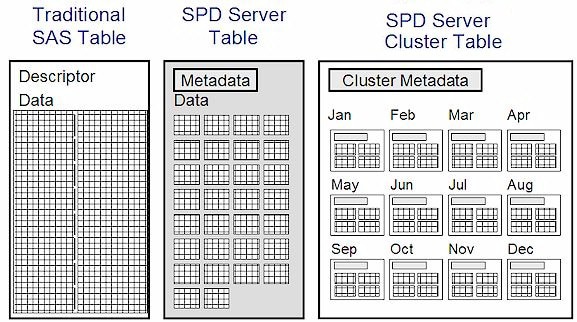Dynamic Cluster Table Structure
The SPD Server dynamic
cluster table is considered part of a hierarchy of tables that have
increasing sophistication.
-
Traditional SAS tables are single files that contain data descriptors and table data. Data values are columns, and data descriptors are metadata that describes the column and data formatting that the table uses. If a traditional SAS table contains one or more indexes, they are stored in a separate file.
-
SPD Server dynamic cluster tables are virtual table structures. SPD Server dynamic cluster tables consist of members. Each member is an SPD Server table. All members must share the same metadata formats and organization. SPD Server dynamic cluster tables use the metadata to manage the data that is contained in the members.The SPD Server dynamic cluster table structure provides architecture that enables flexible loading and rapid storage and processing for very large data tables. When you use dynamic cluster tables, you can load and remove data,, and refresh tables in very large data marts in an easier and more timely manner. Dynamic cluster tables provide organizational features and performance benefits that traditional SAS tables and SPD Server tables do not have.
Copyright © SAS Institute Inc. All rights reserved.
